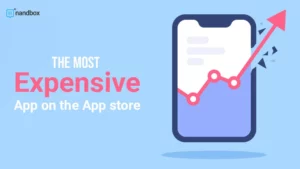How to Build an Interactive App
Any industry-related field has the opportunity to have an app related to it. Whether we’re talking about e-commerce, triathlon sport, communication, or even news, you can have an application for any of these fields. This guide will show you how to build an interactive app and provide you with every single detail related to interactive apps. From what they are to how to find the right app builder for them and use it efficiently. Building an interactive app can be a complex process, but with the right tools and guidance, it can also be rewarding. Whether you’re a seasoned developer or just starting out, this guide will walk you through the steps of creating an interactive app, from brainstorming ideas to launching your finished product. Let’s dive in!
What Is an Interactive App?
Simply put, an interactive app is any type of app that allows users to interact with different audiovisual information, along with other factors like VR/AR and visual gamification. If you look at it closely, you will find that every app has its own version of user interaction. That is why we can’t say for sure that certain apps are not interactive or prevent users from interacting. The process of downloading the app itself is called app/user interaction. Another example of an app interaction is when you’re ordering food through a certain app and you start adding extras to your meal. In addition to interacting through tracking your order’s delivery process or courier. These are all considered app interactions. That is why every app is considered interactive in its own way. Here are the steps you should be taking in order to build an interactive app:
Define Your App’s Purpose and Target Audience
I know that this sounds so obvious. Let’s just say that conducting a study in which you determine your app’s purpose is of crucial importance. By determining why you are creating this app, you face the problem that the market is suffering from and present ways to solve it. This will narrow down the whole process of identifying your target audience.
Before you start building your interactive app, it’s important to define its purpose and target audience. Ask yourself: What problem does my app solve? Who is my target audience? What features will they find most useful? Answering these questions will help you create an app that meets the needs of your users and stands out in a crowded market. Conduct market research, gather feedback from potential users, and create user personas to guide your development process.
You may achieve your app development objectives by knowing the difference between a goal and an objective. Goals serve as a visual representation of the desired outcome. The actions you take to accomplish those goals are your objectives.
Conduct Market Research and Analyze Competitors
Before you start building your interactive app, it’s important to conduct market research and analyze your competitors. You’ll be better able to comprehend the state of the market as a result. It will also help you identify gaps and opportunities and ensure that your app stands out from the competition. Begin by learning about the demands, preferences, and actions of your target market.. Then, analyze your competitors’ apps to see what features they offer, how they market their apps, and what their strengths and weaknesses are. You can conduct surveys to gather answers on what you should and shouldn’t be doing. Use this information to inform your app development strategy and create a unique value proposition that sets your app apart. Here is what you can exactly do to conduct thorough market research and analyze competitors:
- Create user surveys
- Conduct random street interviews
- Research your competition with a quick analysis of their strength and weakness
Decide What Features You Want to Add to Your App
If you want to add necessary app features, you will need to focus on your app’s core functionality and the services it provides. Many individuals are tempted to give an app new, pointless features. However, certain functionalities detract from the main objective of your software. Each additional feature raises the price and length of the development process. Here are some examples of must-have features that every app should have:
- Push Notifications
- In-app Messages
- Media Upload
- Location Sharing or GPS tracker
- Calendar Integration
- Booking Feature
- Ordering System
- User Loyalty
- Smart Wallet
When you’re adding features to your app, always keep in mind that too many features can actually slow down your app’s speed. Furthermore, it can complicate your app’s navigation. That is why you should only add features that are necessary and some other extra features that will make your app as appealing as possible for your users. Don’t overwhelm them with features or limit them. Remember, balance is key!
Create a Wireframe and Prototype
Once you have a clear understanding of your app’s features and functionality, it’s time to create a wireframe and prototype. A wireframe is a visual representation of your app’s layout and user interface, while a prototype is a working model of your app that allows you to test its functionality and user experience. There are many tools available to help you create wireframes and prototypes, such as Sketch, Figma, and InVision.
The wireframe’s sole function is to visually depict the app’s functionality and layout. The components of an app’s design in a wireframe are kind of not important or have a lesser necessity to them. This tool isn’t intended to be an exact representation of what the finished app will look like. Your wireframe should instead emphasize structure and flow.
Use these tools to create a basic layout for your app, including all the necessary screens and features. Then, test your prototype with real users to get feedback and make improvements before launching your app. This will help you identify all current bugs and glitches and fix them before you launch the final app version.
Choose Your App’s Method of Development
Choosing the right development platform and tools is crucial to building a successful interactive app. Native app creation, hybrid app development, and web app development are some of the alternatives available. There are also numerous no-code app builders to choose from if you opt for that option. Additionally, you can choose to have an app developer start from scratch if you have coding or programming language knowledge.
Each option has its own advantages and disadvantages, so it’s important to consider your app’s specific needs and goals before making a decision. Additionally, you’ll need to choose the right tools for your development platform, such as programming languages, frameworks, and libraries. Research your options and consult with experienced developers to make informed decisions.
The best way to choose depends on a number of variables, including your budget, technical proficiency level, app kind, and time to market. These are all factors to be determined before choosing the right method. Identify these factors, plan them out, and decide which method is more suitable for your app’s vision.
Design a User-Friendly Interface and User Experience
When building an interactive app, it’s important to prioritize the user experience (UX) and user interface (UI) design. Well-designed software systems may significantly impact user retention and engagement. Start by researching your target audience and their preferences, then create a wireframe or prototype to test your design. Consider factors such as ease of navigation, visual appeal, and accessibility. The best way to design a great UI or UX is to put yourself in your user’s shoes. Consider what they will find easy to use, appealing to their eyes, and simple when it comes to navigation. Moreover, don’t forget to incorporate user feedback throughout the design process to ensure your app meets their needs and expectations.
Create your app’s MVP
An MVP, or minimal viable product, should always be developed when you start to develop the software. The biggest advantage of an MVP is that it forces you to think about the most important components of your app. If the app project is to succeed, this essential element must be taken into account. What is actually required for your app to run? Develop those features first, and then focus on the others.
Almost anything can be made into an app. During the construction process, it’s easy to become sidetracked and lose track of your objectives. Once the project has been underway for a month or two, it is simple to suggest, “Let’s add this feature” or “Wouldn’t it be cool if the app could do this?” These suggestions and thoughts will only cost you money and time when you’re building your app. Even the basic operation of your app may suffer from them.
Final Thoughts
Developing an app could sound complicated and overwhelming in general. If you’re going for the “hiring a developer” option, this might be true. Developers take time with their coding and programming and might even take double the money you can set as your financial budget. However, a no-code solution like nandbox guarantees you a smooth app-building experience.
With nandbox, you can develop your own app using our simple drag-and-drop interface and feature addition method. This way, you can add features to your app and check out all the changes you’re making through our preview simulation, which allows you to track down your app development process.
Our app builder provides you with a documentation section that has explanations regarding our app builder’s features, modules, and solutions. Sign up now and don’t miss the opportunity to bring your app idea to life at a fraction of the cost. Learn how to build an interactive app with nandbox’s native no-code app builder and familiarize yourself with the process through our 14-day free trial.








